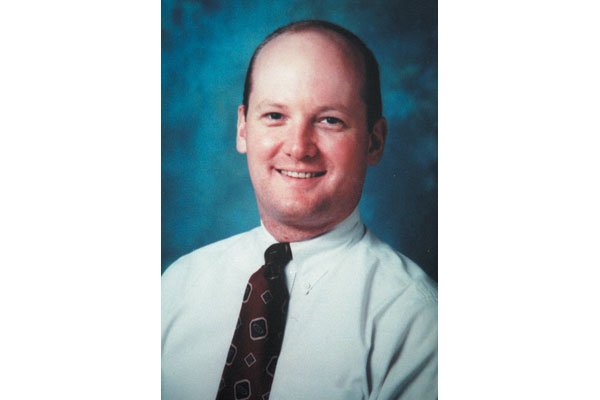Market forces council to buy $43 million of its own debt,
draining funds ahead of likely lay-offs.
”
What we have right now is the financial meltdown costing us
money,
”
Councilman Peter Arellano said.
Declining tax revenues and troubles on Wall Street will likely force Rosanna Street to lay off city employees next month.
About 50 nervous-looking city workers showed up at Monday night’s council meeting, when the body voted 6-0 to buy back $42.7 million worth of auction rate notes it issued in 2003. Councilman Perry Woodward was absent.
The move will shrink the city’s dwindling general fund reserves by $2.4 million and also lower Gilroy’s investment portfolio’s balance from $60.7 million to $17.3 million. The city invests mostly in securities and Federal Agency bonds. The council also heard from staff that this year’s general fund deficit would likely balloon from $3.9 million to nearly $6 million thanks to lower-than-expected revenues and shrinking sales and property tax receipts.
For these reasons, City Administrator Tom Haglund told the body it “needs to consider personnel reductions and other cost saving measures that we could implement.”
The council will meet Nov. 5 to discuss further options, and Mayor Al Pinheiro encouraged his colleagues and employees to think long and hard about what they could do.
“It is our responsibility to protect this community and this city, financially, the best we can,” Pinheiro said. “But I don’t want everybody to put their hair on fire and think the world is coming to an end.”
The $42.7 million figure represents the amount Gilroy still owes investors after issuing nearly $46 million worth of notes in 2003 to fund the construction of the Sunrise Fire Station, the new police station, the sports complex and improvements at the corporation yard. The city had the cash for the projects back then, but rather than spend its own money, it opted to externally finance the projects and pay a lower interest rate to investors than it expected to earn on its un-spent reserves.
“Up until the last several weeks, that assumption has proved correct, and the city’s portfolio has netted over $600,000 in interest earnings savings,” wrote Finance Director Christina Turner.
But as the sub-prime mortgage and credit crisis has spread and as the city’s creditor, MBIA, has experienced downgrades in its credit rating, jittery investors have become increasingly concerned about liquidity. Starting in early 2008, demand from new investors decreased to the point that Gilroy’s more than 200 existing investors could not sell their notes and were required to retain them. Their consolations resulting from this so-called “failed auction” were automatically higher interest rates based on a weekly index determined by more than 650 securities firms, banks and asset managers. As a result, weekly rates have shot up from about 3 percent to nearly 12 percent, and now hover around 8 percent, according to Turner and Craig Hill, the city’s financial adviser who works for San Rafael-based Northcross, Hill & Ach.
“In a matter of weeks, we’ve all had heart attacks and come back down,” Hill told the council Monday.
Gilroy only has $152,000 per month budgeted for the interest payments on its notes, which anticipates an annual rate of about 4 percent. But an 8-percent interest rate, for example, costs the city about $300,000 a month, meaning Gilroy was set to hemorrhage money until the council voted to buy back its own debt Monday. Each year, principal payments are due Sept. 1, ranging from $1,025,000 in 2006 to $2,425,000 budgeted for 2033.
“We need to take action with (the notes) to avoid further volatility in the interest rates we pay,” Haglund said, adding that the credit crunch has also prevented the city from being able to secure a letter of credit to refinance the notes. Turner said she hopes refinancing could happen by December 2009, but some council members remained skeptical.
“This is like a temporary time-out in the hopes that we’re able to refinance,” Turner said. The worst case scenario, though, would be an inability to refinance due to market conditions, in which case the city would be stuck with its own debt and would have to find a way to pay itself back.
If the city is unable to re-sell the notes and has to shoulder its own debt, “that’s only half your problem, because we’ll still need to pay back the water and sewer funds that took that hit,” Haglund said.
This confused Councilman Craig Gartman, who said, “We were told we would have the funds to purchase (the notes in case of emergency), but based on what I’ve read here, it doesn’t sound like we have enough money to do that,” Gartman said.
It’s not that the city does not have the cash, it just did not expect to spend it now, officials responded.
“All of that (cash) is still present, but that was money identified in the water and sewer funds,” which have about $39 million in them. There’s another $4.2 million in another sewer fund, and finance officials plan to pool about $39.8 million from these three sources and then take another $500,000 from a separate debt fund and the remaining $2.4 million from the general fund reserves, which will lower that account to about $14.2 million, down from more than $26 million a year ago.
“We’re obviously in uncharted waters here,” Haglund said. “We have a tremendous amount of work … and I beg your indulgence and patience.”
Mayor Pinheiro also encouraged calm dialogue among the unions and the council, but made it clear to a weary-eyed audience of employees that they should brace for potential lay-offs.
“We need to work together and think of what’s best for community in general,” Pinheiro said.














